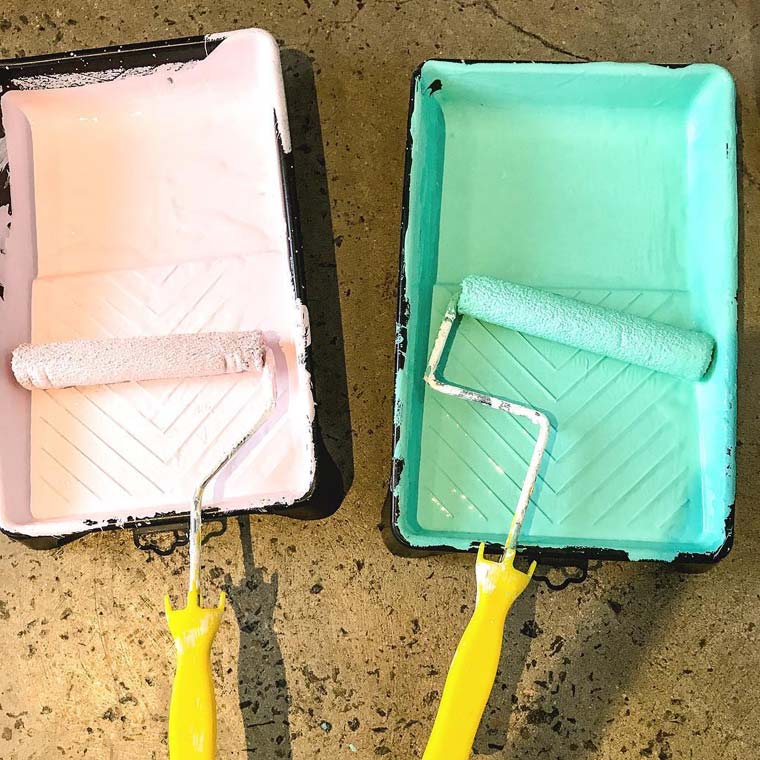Colour is more than just a decorative choice; it’s a powerful tool that can influence how we think, feel, and behave. Whether you’re painting your home, office, or commercial space, the colours you choose can have a significant impact on your mood, mindset, and even your productivity.
At AKD Painting, we believe in the power of colour to transform not only spaces but also the way we live and work. In this blog post, we’ll explore the fascinating world of colour psychology and offer practical tips on how to select the right hues to enhance your environment and wellbeing.
The Basics of Colour Psychology
Colour psychology is the study of how colours influence human emotions and behaviours. It’s widely used in marketing, design, and increasingly in interior decorating. Different colours can evoke different emotional responses, and when used thoughtfully, they can help create spaces that are calm, energising, focused, or welcoming.
How Colour Affects Mood
Let’s explore the emotional associations of some of the most commonly used colours:
Blue: Calm and Productive
Blue is known for its calming and soothing qualities. It helps reduce stress and promote feelings of tranquility, making it ideal for bedrooms, bathrooms, and workspaces.
- Light blues promote relaxation
- Deeper blues enhance focus and clarity, great for home offices
Green: Balance and Renewal
Green represents nature, growth, and harmony. It’s easy on the eyes and provides a sense of balance and rejuvenation.
- Ideal for bedrooms, living rooms, and home offices
- Pairs well with wood accents for a grounded, natural feel
Yellow: Happiness and Energy
Yellow is uplifting, cheerful, and energising. It can make a space feel brighter and more inviting.
- Great for kitchens, dining areas, and hallways
- Best used in moderation, as too much yellow can become overwhelming
Red: Passion and Stimulation
Red is a bold, dynamic colour that stimulates the senses and evokes strong emotions.
- Works well as an accent colour in dining rooms or lounges
- Encourages conversation and energy, but should be balanced to avoid overstimulation
Orange: Warmth and Enthusiasm
Orange combines the warmth of red and the optimism of yellow. It’s friendly, vibrant, and full of life.
- Ideal for creative spaces, playrooms, or social areas
- Use sparingly or with neutral tones to prevent it from overpowering a space
Purple: Luxury and Creativity
Purple is associated with creativity, sophistication, and luxury.
- Deep purples work well in formal living rooms or master bedrooms
- Lighter lavenders are soothing for nurseries or meditation spaces
Neutrals: Versatility and Comfort
Neutral colours such as white, beige, grey, and taupe offer timeless appeal and flexibility.
- Create a clean, calming backdrop
- Easy to accessorise with pops of colour
- Perfect for modern interiors, rentals, or staging homes for sale
Choosing Colours for Productivity
When designing workspaces or study areas, it’s important to consider how colours can enhance focus and productivity:
- Blue: Best for cognitive-heavy tasks that require focus and efficiency
- Green: Good for long-term concentration and reducing eye strain
- Yellow: Can boost creativity and innovative thinking
- White or soft neutrals: Encourage clarity and reduce distractions
Avoid overly intense colours like bright red in workspaces, as they can increase anxiety and agitation.
Colour Psychology in Different Rooms
Living Room
This is a space for relaxing and socialising, so warm, inviting colours work best. Think soft browns, warm greys, muted greens or even subtle blues.
Bedroom
Bedrooms benefit from calming, restful colours. Blues, greens, and cool neutrals like grey or beige promote good sleep and relaxation.
Kitchen
Energetic colours like yellow or soft orange can make your kitchen feel welcoming and lively. Avoid dark colours in small kitchens, as they can feel cramped.
Bathroom
Whites, pale blues, and greens can help create a spa-like atmosphere. These colours evoke cleanliness, freshness, and calm.
Home Office
Choose colours that help keep you focused and inspired. Blue and green are top picks, while hints of yellow can add creative flair.
Cultural and Personal Considerations
It’s important to note that colour associations can vary based on personal experiences and cultural backgrounds. For example, while white is associated with cleanliness in many cultures, in others it may symbolise mourning. Similarly, bright colours may energise one person but feel chaotic to another.
When choosing paint colours, consider:
- Your personal preferences and emotional responses
- How the room will be used
- Lighting conditions (natural and artificial)
- The size and orientation of the room
Practical Colour Selection Tips
1. Test Before You Commit: Always test paint swatches on your walls and observe how they look throughout the day under different lighting.
2. Balance Bright and Neutral: Use bold colours as accents and balance them with neutrals to avoid overwhelming a space.
3. Coordinate with Furnishings: Consider your furniture, flooring, and décor when selecting paint colours to create a cohesive look.
4. Consult a Professional: If you’re unsure, a professional painter can help you choose colours that suit your space and lifestyle.
AKD Painting: Helping You Choose the Right Colour
At AKD Painting, we don’t just apply paint—we help you select colours that work harmoniously with your space, mood, and vision. Our experienced team understands the nuances of colour psychology and how to translate them into beautiful, functional interiors.
Whether you’re updating a single room or giving your whole home a fresh new look, we provide expert advice, premium materials, and a flawless finish that enhances your environment.
Transform Your Space with the Power of Colour
Ready to refresh your home or office? Discover how the right colours can elevate your mood, boost productivity, and enhance everyday life.
Call AKD Painting today on 0474 854 369 for expert painting services and colour consultations tailored to your unique needs.







